In the real world, the use of thermal imagers is very wide, especially in the military. Thermal imagers can be used to find tank engines and soldiers that emit heat at night.
In industry, you can use a thermal imaging camera to quickly detect the temperature of the workpiece, so as to grasp the necessary information. Since the failure of electronic devices such as motors and transistors is often accompanied by an abnormal increase in temperature, thermal imaging cameras can also be used to quickly diagnose the failures.
When influenza, pneumonia and other diseases are prevalent, thermal imaging can be used to quickly determine whether there is fever. Due to the high temperature of cancer cells, they can also be used to diagnose breast cancer and other diseases. The border defense department can also use it to determine whether there are illegal immigrants in the vehicle.
Military applications of infrared thermal imaging
With the development of thermal imaging technology, it has a wide range of applications in national economy, production and construction, scientific research, national defense and military, and its military applications have also involved various aspects of infrared alerting, tracking, targeting, and guidance. .
one
Ballistic missile defense
The United States’ ballistic missile defense (Plan B is currently a hot issue of widespread international concern. The BMD plan takes into account the different characteristics of enemy missiles in the three phases of launch boost phase, extra-atmospheric ballistic flight phase, and re-entry phase. Different methods, establish a multi-level, full interception system.
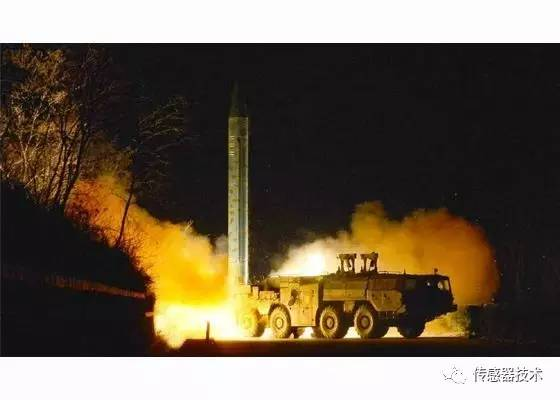
In this interception system, infrared focal plane array imaging technology plays a core role, mainly in the following three aspects.
1. Global surveillance. In the initial stage of the launch of the enemy’s missiles, its position and quantity are detected, mainly relying on early warning satellites deployed in space.
2. Tracking and identification. In the initial stage of the launch of enemy missiles and the ballistic flight stage, identify true and false targets and track their trajectories.
3. Identification and guidance. On the interceptor missile launched by one's own side, infrared imaging is used to realize target recognition and precise guidance, and hit and destroy enemy missiles.
two
Conventional missile weapons:
The use of infrared imaging guidance allows the missile to obtain a longer omnidirectional detection range and recognition, and the ability to counter artificial interference such as infrared decoys, greatly enhances the missile’s power, and also makes it a "killer" against stealth aircraft, and is also a thermal imaging technology. The top priority in military applications.
1. Typical infrared thermal imaging guided missile
With the rapid development of infrared imaging technology, countries around the world have successively developed a variety of infrared imaging guided missiles. Such as the Stinger Post and Stinger RMP of the United States, the Slam AGM284E long-range attack missile, the SAM213 of the Soviet Union and the improved Northwest wind of France, the American young animal AGM265D/F air-to-surface and air-to-ship missiles, and the French MICA missiles. (Infrared), the British ASRAAM missile, the German IRIS-T missile, and the American AIM-9x missile. Among them, the American AIM-9x short-range air-to-air missile is the latest air-to-air missile developed by the United States.
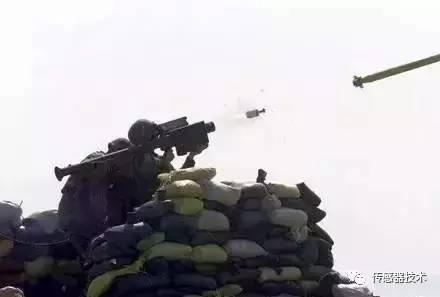
Typical representatives of the application of staring infrared focal plane array imaging technology are the long-range Triggett missile jointly developed by Germany, Britain and France, the American Javelin portable anti-tank missile, and the theater high-altitude air defense missile THADD.
2. Advanced anti-armor missile system:

In the early stage of the development of infrared focal plane technology, the first successful applications were the thermal sights and precision guided seekers of anti-armor missile systems. Some major advanced anti-armor missile programs in the United States and Europe are now in the equipment and service stage. There are mainly the American Javelin missile system, the European third-generation long-range anti-tank missile (TriGAT-L, also known as ATGW-3), and the American Hellfire missile (Hellfire).
three
Military infrared thermal imager
Infrared thermal imager is the most widely used infrared device. In the early stage of thermal imaging technology, only thermal imagers based on unit devices can be developed, with low field frequency and limited to small-scale applications.
It wasn't until the mid-to-long wave mercury cadmium telluride (MCT) material and the light-conducting multi-line device technology matured in the 1970s that thermal imaging cameras began to be mass-produced and equipped with the army, and they developed rapidly with a wide variety of types.
Most of the first-generation military infrared thermal imagers used MCT’s 60, 120, and 180-element line-column "universal components" to manufacture forward-looking infrared systems, namely FLIR, which accounted for more than 50% of infrared military applications. By the 1990s, the performance The higher second-generation thermal imager SADA came into being, namely the US Army standard advanced Dewar components. SADAⅠ is 240×2 long-wave MCT TDI scanning focal plane, and SADAⅡ is 480×6 (and 480×4) long-wave MCT TDI scanning. Focal plane, the second-generation thermal imager using SADAⅡ has doubled the detection distance of the first-generation thermal imager using 180-element universal components, and if it is a staring focal-plane thermal imager, it has more advantages and is compact. , Rugged, reliable, power-saving, and more sensitive. The detection distance of the 640×480 yuan InSb staring focal plane thermal imager is 4 times that of the general components.
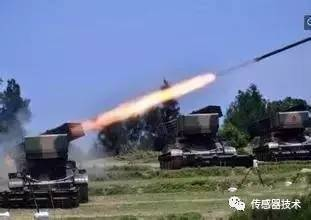
SADAⅡ has been widely used in various airborne, shipborne and vehicle-mounted thermal imaging cameras and search and tracking systems, such as Bradley tanks, Abrams M1 tanks, Comanche armors, and American super fighters F-22, V-22 and F -18 uses staring-type focal plane thermal imaging cameras.
Four
Space infrared thermal imaging
At present, the space applications of infrared thermal imaging mainly include three aspects: global surface monitoring, planetary and space exploration, and surveillance of military events. Since the first meteorological satellite was launched in the sky in 1960 and launched by Spitzer, the most advanced space infrared telescope in the United States, the application of infrared thermal imaging technology in space has also been fully utilized.
Civil applications of infrared thermal imaging
The so-called civilian field refers to several fields such as electric power, construction, medicine and petrochemicals. Internationally, thermal imaging cameras are widely used in these fields. However, the application of thermal imaging cameras in these civilian fields in our country is still in its infancy, and the overall development space is still relatively large.
one
Applications in the power industry

Although the electric power industry is the industry with the most applications of thermal imaging cameras for civilian use in my country, as the most mature and effective means of online power detection, thermal imaging cameras can greatly improve the operational reliability of power supply equipment. Therefore, with the continuous development of my country's economy, the power industry in other provinces will also use more infrared thermal imaging cameras.
two
Application in the construction industry
According to the survey of the application of thermal imaging cameras in the construction industry by relevant departments, although there are a lot of construction companies in my country at present, each thermal imaging camera can reach it.
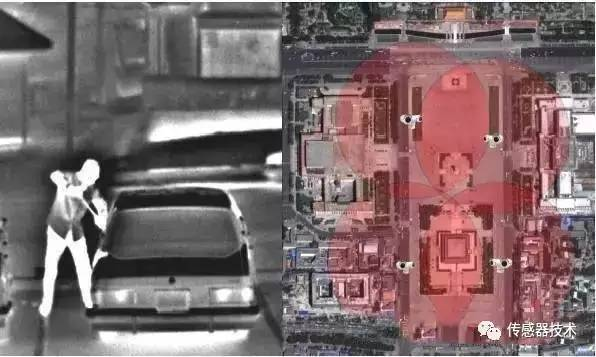
If every construction enterprise is equipped with an infrared thermal imaging camera, it will not only promote a huge increase in the market demand for infrared thermal imaging cameras, but also greatly improve the work efficiency of construction enterprises and reduce costs.
three
Applications in the medical industry
The human body is actually a natural source of infrared radiation. When a disease occurs in the human body, the thermal balance of the human body will be destroyed. Therefore, measuring the change of human body temperature is an important index for clinical diagnosis of diseases.
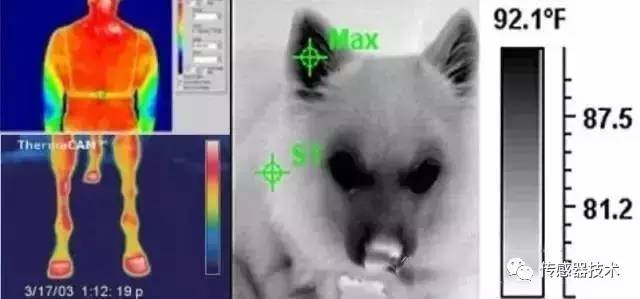
Thermal imaging cameras can accurately display and record the temperature distribution of the human body for further pathological analysis. Nowadays, medical thermal imaging cameras have become effective tools for diagnosing superficial tumors, vascular diseases and skin diseases. In medical research, the application of thermal imaging cameras in medicine has become a special research topic.
Four
Application in petrochemical industry
We know that many important equipment in petrochemical production work under high temperature and high pressure, and there are certain dangers lurking. Therefore, online monitoring of the production process is very important.
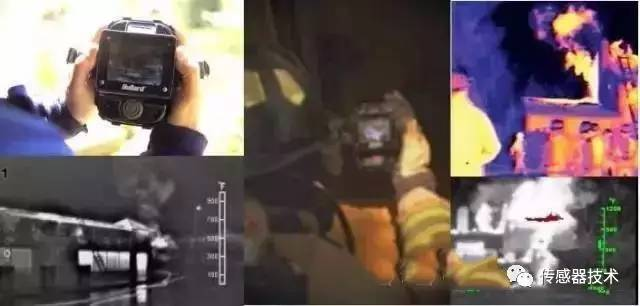
Practical thermal imaging cameras can detect the corrosion, rupture, thinning, blockage and leakage of product transmission and pipelines, refractory and thermal insulation materials, and various reaction furnaces, and can quickly and accurately obtain the two-dimensional temperature distribution on the surface of equipment and materials.
five
Application in airport security
The airport is a typical place. There are 108 planes staying at Copenhagen Airport every day, and everyone needs to undergo a thorough security check before entering the CRSA. One of the problems faced is that CRSA is approaching the runway, and the aircraft travels from the trestle to the take-off area or the aircraft that has just landed sends passengers to a trestle and enters the CRSA from the "unsafe area". In addition, cars and people from inside the airport but from other areas outside of CRSA may enter this area.
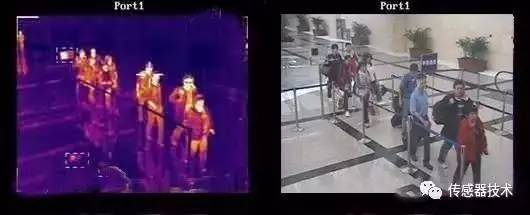
It is easy to monitor and track the target with a visible light camera during the day, but at night, the visible light camera has certain limitations. The airport environment is complex, and the visible light imaging effect is greatly interfered with at night. When an alarm is triggered, it may be impossible to see the event that caused the alarm due to poor image effects. The solution to this problem is to use an infrared thermal imaging camera.
six
Application in port and river
In inland waterway applications, it is often necessary to detect the number of ships passing by. The traditional method is through AIS or VTS, but AIS is not as accurate as we think. AIS depends on the ship itself to open the equipment, otherwise it will not receive information. VTS It is proactively detected. Many small boats and ships are also unsure when crossing.
Therefore, even if it is mandatory for some major activities, only 70% of the ships can be tested, and it may only be 50% in normal times. Therefore, users particularly hope to realize ship traffic statistics through video.
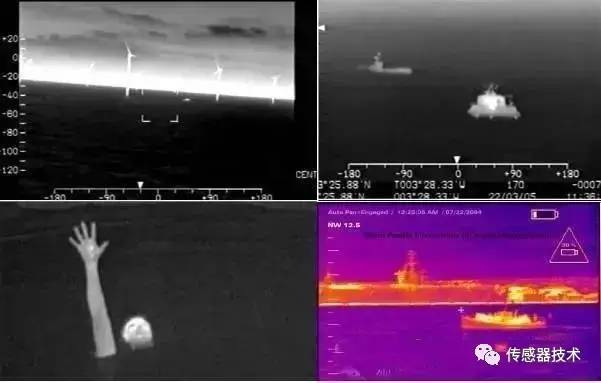
However, it is very difficult for ordinary visible light to realize the regional intrusion function on the water surface, especially due to the influence of waves, weather and other factors. Thermal imaging provides the possibility to realize such applications. The temperature perception of thermal imaging can be used to determine the ship’s Position, speed, quantity, etc. information.
In addition, some buoys are generally set up on both sides of the main channel, and the ship cannot deviate from the channel and cross the buoy in normal navigation. Therefore, thermal imaging can also be used in this area to achieve intrusion detection as a supplement to the VTS system.
seven
Application in the field of border defense
As we all know, border defense is a very difficult thing. my country’s borders are very long and the oceans are vast. Due to the harsh outdoor environment, many systems are not able to take precautions well. Especially on days of rain, snow, heavy fog, and strong winds, border patrols are also a very difficult task. .
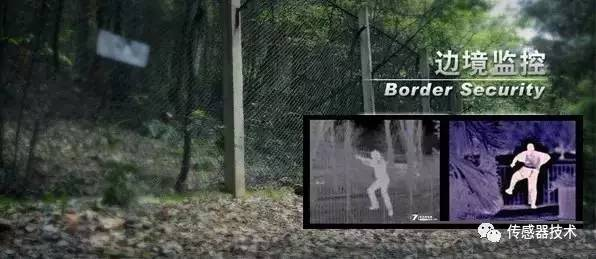
If personnel patrols and telescopes are used for observation, the observation effect is often poor due to the short wavelength of visible light, resulting in missed, mis-checked, and mis-checked phenomena. The infrared thermal imager can detect infrared rays with a shorter wavelength, so it can be observed at a long distance, especially suitable for wind and rain.
Guangdong Huizhou police have placed five sets of infrared thermal imaging cameras in a certain border area. During the trial process, they successfully cracked multiple cases of illegal immigrants. The efficiency was much higher than the previous manual inspections.
In addition to the above, in recent years, infrared imaging technology has become more and more important in the field of security applications.
Application of infrared thermal imaging technology in the field of security: monitoring of targets at night and under severe weather conditions
At night, due to well-known reasons, visible light equipment can no longer work properly. If artificial lighting is used, it is easy to expose the target. If low-light night vision equipment is used, it also works in the visible light band and still needs external light illumination. The infrared thermal imager passively accepts the infrared heat radiation of the target itself, and can work normally during the day and night, and will not expose itself.
Infrared 12.png
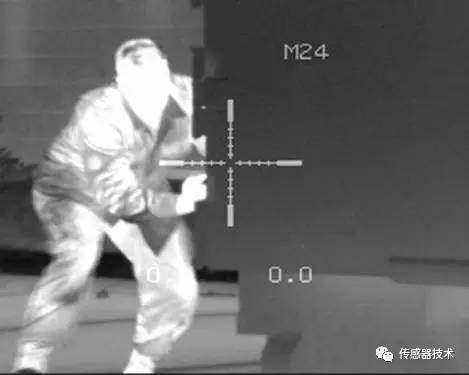
Also under severe weather conditions such as rain and fog, because the wavelength of visible light is short and the ability to overcome obstacles is poor, the observation effect is poor, but the wavelength of infrared is longer, especially for thermal imaging cameras that work at 8 to 14um. The rain and fog have high ability, so the target can still be observed normally. Therefore, at night and in severe weather conditions, infrared thermal imaging monitoring equipment can be used to monitor various targets such as personnel and vehicles.
Application of Infrared Thermal Imaging Technology in the Security Field Two: Fire Monitoring
Since the infrared thermal imager is a device that reflects the surface temperature of an object, it can be used as an on-site monitoring device at night, and can also be used as an effective fire alarm device. In a large area of forest, fires are often caused by unobvious hidden fires. of.

This is the root cause of devastating fires, and it is difficult to find signs of such hidden fires with existing ordinary methods. The use of infrared thermal imaging cameras can quickly and effectively find these hidden fires, and can accurately determine the location and scope of the fire, and find the fire point through the smoke, so as to know and prevent and extinguish it early.
Application of Infrared Thermal Imaging Technology in the Security Field III: Recognition of Camouflage and Hidden Targets
Ordinary camouflage is based on anti-visible light observation. The crimes committed by criminals are usually hidden in the grass and woods. Due to the harsh outdoor environment and human visual illusions, they are prone to misjudgment.
The infrared thermal imaging device passively receives the thermal radiation of the target itself. The temperature and infrared radiation of the human body and the vehicle are generally much greater than the temperature and infrared radiation of the vegetation, so it is not easy to camouflage, and it is not easy to make wrong judgments.
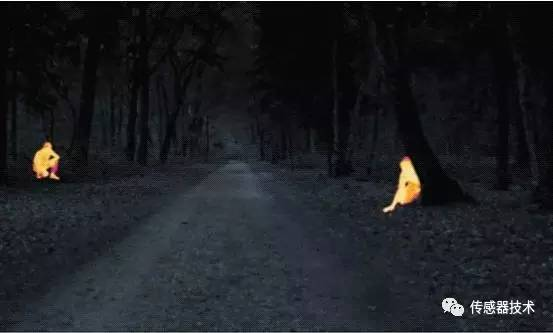
With the development of optoelectronic information, microelectronics, network communication, digital video, multimedia technology and sensing technology, security monitoring technology has moved from traditional analog to highly integrated digital, intelligent, and networked.
With the increase of market demand, modern high-tech is almost applied or will be applied in the security monitoring system. Infrared thermal imaging technology, which is developing rapidly in modern sensing technology, has also begun to be applied in security protection systems.
An important member of the thermal imaging camera family-infrared thermal imaging night vision
Infrared thermal imaging night vision cameras are a branch of infrared thermal imaging cameras. Traditional infrared thermal imaging cameras are more handheld than telescope types, and are mainly used in traditional engineering inspections.
At the end of the last century, with the development of infrared thermal imager technology, due to the technical advantages of infrared thermal imager technology over traditional night vision devices, the US military gradually began to equip infrared thermal imaging night vision devices.
Infrared thermal imaging night vision device, another name is thermal imaging telescope, in fact, it can still be used well during the day, but because it can be used mainly at night to exert its effectiveness, it is called infrared thermal imaging night vision device.
Infrared thermal imaging night vision devices have been resident in the past 10 years, and RNO, a well-known US military enterprise, can be said to have contributed a lot. The cooperation between RNO and the US military has also promoted the development of infrared thermal imaging night vision devices for civilian use.
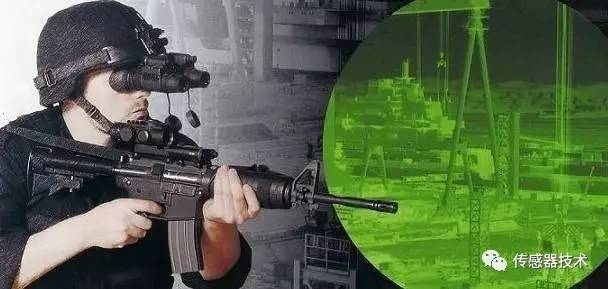
Infrared thermal imaging night vision devices have high technical requirements for production, so there are few manufacturers that can produce infrared thermal imaging night vision devices in the world.
Six elements of choosing an infrared thermal imager
1. Pixel
The first step is to determine the pixel level of the infrared thermal imager. Most thermal imagers are related to the pixel level. The relatively high-end product pixels of civilian thermal imaging cameras are 640*480=307,200. The infrared pictures taken by this high-end thermal imaging camera are clear and delicate. The minimum size measured at 12 meters is 0.5*0.5cm; mid-end thermal imaging The pixel of the instrument is 320*240=76,800, and the minimum size measured at 12 meters is 1*1cm; the pixel of the low-end thermal imaging camera is 160*120=19,200, and the minimum size measured at 12 meters is 2*2cm . It can be seen that the higher the pixels, the smaller the minimum size of the object that can be photographed.
Second, the temperature measurement range and the measured object
Determine the temperature measurement range according to the temperature range of the measured object, and select the infrared thermal imager with the appropriate temperature range. At present, most infrared thermal imaging cameras on the market are divided into several temperature ranges, such as -40-120°C and 0-500°C. It is not that the larger the temperature range, the better, the smaller the temperature range, the more accurate temperature measurement is. In addition, when general infrared thermal imaging cameras need to measure objects above 500°C, they need to be equipped with corresponding high-temperature lenses.
3. Temperature resolution
The temperature resolution reflects the temperature sensitivity of an infrared thermal imaging camera. The smaller the temperature resolution, the more obvious the infrared thermal imaging camera's perception of temperature changes. Try to choose a product with a smaller parameter value when choosing. The main purpose of the infrared thermal imaging camera to test the measured object is to find the temperature fault point through the temperature difference. It does not make much sense to measure the temperature value of a single point. The main purpose is to find the relative hot spot through the temperature difference and play a role in pre-maintenance. .
Four, spatial resolution
In simple terms, the smaller the spatial resolution value, the higher the spatial resolution, the more accurate the temperature measurement, and the smaller the spatial resolution value. The smallest target to be tested can cover the pixels of the infrared thermal imager, and the temperature tested is the target's temperature. Real temperature.
If the spatial resolution value is larger, the spatial resolution will be lower. The smallest target to be tested cannot completely cover the pixels of the infrared thermal imaging camera, and the test target will be affected by its environmental radiation. The test temperature is the temperature of the target and its surroundings. The average temperature is not accurate enough.
Five, temperature stability
The core component of an infrared thermal imaging camera is an infrared detector. At present, there are mainly two types of detectors, namely, vanadium oxide crystal and polysilicon detector. The main advantage of the vanadium oxide detector is the temperature measurement field of view
MFOV (Measurement Field of View) is 1, and temperature measurement is accurate to 1 pixel.
AmorphousSilicon (polycrystalline silicon) sensor, MFOV is 9, that is, the temperature of each point is obtained based on the average of 3×3=9 pixels. The vanadium oxide detector has good temperature stability, long life, and small temperature drift.
6. Combination function of infrared and visible light image
If the infrared image and the visible light image are combined and displayed, a lot of work is reduced. The unknown hot spot in the infrared image can be judged based on the visible light image. At the same time, the automatic generation of the report will greatly reduce the operation time.
my country's current infrared thermal imager industry development status and main problems
The performance of domestic infrared thermal imaging cameras is basically close to that of imported products, but due to brand influence and other reasons, the price is only half of that of imported products. The core components of the thermal imaging camera are mainly imported, and the core technology is restricted by others. The competitiveness of domestic enterprises is mainly reflected in the overall technology, optical system, follow-up circuit, image processing software, etc. Of course, talents, management, and markets are also part of competitiveness.
In recent years, China’s infrared product market has developed rapidly, but because core components (such as non-refrigerated detectors) rely on imports, factors such as price, quality, and maintenance have severely restricted the development of the domestic infrared industry and the widespread promotion of the market. Far from being able to adapt to the growing domestic market demand, and unable to establish a competitive advantage in the international market.
In the infrared technology industry, products related to infrared thermal imaging technology and infrared detection technology dominate, while other infrared technology products occupy a small proportion or develop slowly in the entire industry structure. In addition, everyone is fighting each other and lacks Top-level planning and industry constraints can easily lead to vicious competition.
At present, the main problems existing in my country's infrared industry are:
1. Weak technological innovation ability and ability to transform scientific research results, lack of financial support
Infrared detectors are the core component of infrared technology. At present, the development of detectors in my country is still in its infancy. The development of detectors has not kept up with the development needs of system products, especially infrared detectors for high-end applications still rely on imports.
In the field of infrared technology, the separation of scientific research and production is a long-standing problem in my country. Scientific research units often have strong scientific and technological strength, but many products only stay at the level of samples, exhibits or small batch production. Products are readily available, but products cannot be provided quickly when the market demands them, and most scientific research results cannot be quickly transformed into productivity.
2. Lack of a standardized industry standard system
At present, there are no unified national norms and industry standards in the professional fields of infrared optical lens processing, infrared imager machine testing and other professional fields. The imperfect standard system has led to low-level repeated research and repeated design in related fields, and the speed of new product promotion Slower.
The establishment of national norms and industry standards can promote the unified, coordinated, and efficient development of the industry, and it is a bridge between scientific research, production and use of infrared technology. The scientific and technological achievements in the infrared technology industry can only be quickly promoted and applied after being included in the corresponding standards.
3. The scale of the industry is small and the product cost is high
my country's research on infrared technology is mainly concentrated in some scientific research institutes and universities. These research units are mainly engaged in the research of the detector array and its technology, and cannot form mass production; and most of the companies dealing in infrared products only stay in the business of making some peripheral equipment and developing some software, and their R&D strength is weak. Little influence. The small industrial scale not only directly leads to the higher cost of infrared products and increases the difficulty of product promotion, but also restricts the investment in basic research related to infrared technology, forming a vicious circle.
4. Insufficient market traction, application areas need to be further developed
Related products of the infrared technology industry cannot fully meet the needs of the market, and the potential market needs are yet to be developed. Infrared technology is most widely used in the military, electric power, and firefighting industries. Only by combining the characteristics of infrared technology with the specific needs of the application industry can we develop new products that meet market needs in a broader field and better serve national economy.
For example, an American company's vehicle-mounted detector, only this one product with accurate market positioning has reached the industrial scale of mass production of hundreds of thousands of units, which has stimulated several industries such as optics, electronics, and structure. However, there are not many types of application products of similar scale in my country, and the market traction formed is not enough.
5. Weak foundation of optical materials and related data
With the gradual promotion and application of domestic infrared systems, infrared optical materials have also developed rapidly, and domestic infrared material production units have gradually increased, but most of their optical parameters are based on foreign data, and there is no complete and accurate measuring instrument and standard. Performance deviations The situation remains to be verified by application.
Some materials have large deviations and are not stable; they bring a lot of uncertainty to the application. The weak foundation of research, production technology, and measurement has a certain restrictive effect on the large-scale development of infrared system products, and it is a problem that needs to be solved in the process of industrialization.
After years of development, infrared thermal imaging technology has expanded from the original main military purpose to such as industrial monitoring and temperature measurement, law enforcement and anti-narcotics, security and crime prevention, medical and health, remote sensing, equipment early fault diagnosis and maintenance, maritime rescue, astronomical detection, vehicles Infrared thermal imaging technology is heading for glory in broad civilian fields such as night vision enhanced observers for aircraft and ship pilots.
At the same time, we should be soberly aware that infrared thermal imaging technology has embarked on a challenging development path. In order to develop, more problems must be solved to improve sensitivity, increase recognition distance, and reduce costs for future applications. Provide new advantages.
Based on the current international and domestic development status and trends of the infrared technology industrialization process, the country should support and guide the industry from a macro perspective, so that it can enter a benign development track, and establish effective coordination between the government, industry associations and enterprises. Mechanism to form a new high-tech field that can stimulate the growth of the national economy.